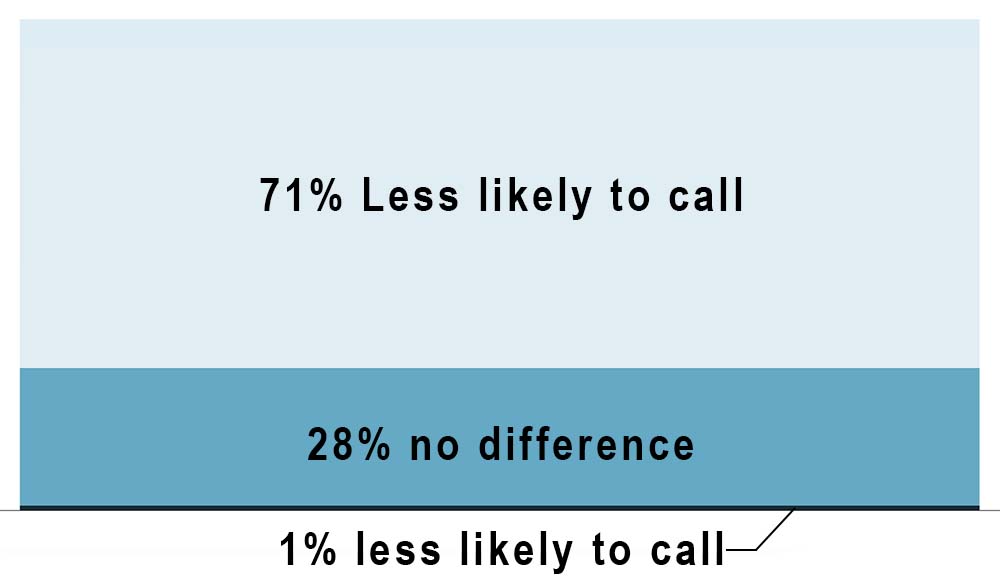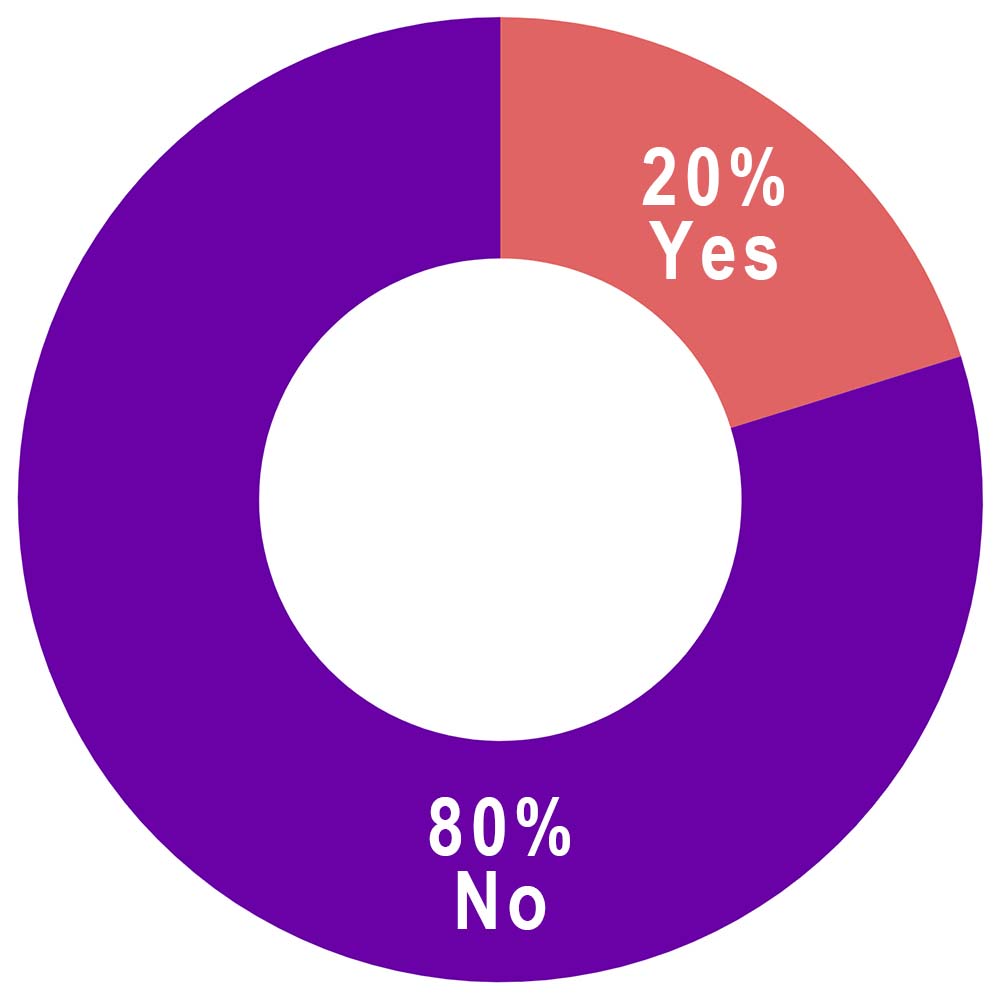The internet has changed the way people shop. Once built exclusively out of brick and mortar, the global marketplace has evolved into a cyber-network full of digital coupons, carts, and clicks.
Nowadays, when a need arises — whether it’s goods and services, advice, research, etc. — people turn to the internet, which is accessible 24/7 via a mobile phone.
However, would Americans be willing to purchase a product or service online without knowing its price? For homeowners seeking comfort solutions, that’s often the expectation, as for years, most HVAC contractors have refrained from sharing pricing on their websites. As online shopping becomes the norm, this ambiguous pricing strategy has created a discrepancy in the comfort purchasing journey.
A recent survey conducted by Clear Seas Research and The ACHR NEWS revealed that 71% of homeowners are more likely to call HVAC contractors that include pricing on their websites; however, per the study, only 20% of responding contractors actually offer pricing online.

PRICING TRANSPARANCY: Shoppers prefer contractors that share their pricing online. (Courtesy of Clear Seas Research)

HIDDEN COSTS: The majority of contractors are not currently sharing their pricing online. (Courtesy of Clear Seas Research)
The survey, which tallied responses from 504 participants across numerous topics, including the purchase journey, the importance of contractor certifications, top selling equipment, and more, can be accessed here.
Set In Our Ways
Why aren’t more HVAC contractors offering pricing online? For many, that’s just the way they’ve always done business. And if it’s not broken, why fix it?
“One common objection or fear is that contractors should not reveal prices to consumers before they’ve had the opportunity to enter their homes and build a rapport with them,” said Paul Redman, vice president of sales and success, Contractor Commerce. “This misconception has been baked into the bones of the HVAC industry since before the internet came about.”
The decision to publish pricing online is a complex one for HVAC contractors and unearths numerous questions. When creating an online storefront, how does a contractor identify the appropriate price? How and when should that price be increased in response to inflation- or manufacturer-driven price increases? What if competitors undercut a company’s published prices? By posting prices, does a company lose the ability to upsell customers? How does a smaller company find the time and manpower to create a digital storefront?
“It can be somewhat difficult, at first, to move everything online, which is why we partnered with a third-party provider,” said Lou Hobaica, president, Hobaica Services Inc. in Phoenix. “But the reality is, no matter how much work it takes, you need to be where your customers are when they need you.”
Kyle Gargaro of The ACHR NEWS talks with Contractor Commerce Vice President of Sales Paul Redman.
Transparent Pricing
While many in the HVAC industry remain resistant to publicizing prices online, those that have done so are reporting great success.
Susan Frew, co-owner and president of Sunshine Home Services in Denver, added prices to her company’s website approximately one year ago. Recognizing that younger consumers have been raised to shop online, she felt the time was right to broaden her company’s sales approach.
“It’s important for us to be transparent with our customers,” she said. “People research and make purchases online in today’s marketplace. In order to attract customers, we have to meet them where they want to do business.”
On Sunshine’s website, shoppers are able to select their residence by size — small, medium, and large — and partition their desired HVAC system by quality — good, better, and best. To receive a price, shoppers simply input the size of their home and the system performance they are seeking.
“The prices that are quoted are not exact, and there are some disclaimers in there, but this approach gives homeowners an idea of what to expect,” Frew said. “Consumers really appreciate being able to see the different options. Our online closing rate has been around 65% so far, which is extremely high.”
Hobaica, who is 62 years old, said he does all of his shopping online. His clientele base, which mostly ranges in age from 55-75, does so as well. If customers feel most comfortable shopping online, then HVAC companies — including his — need to be present in that space, he said. For that reason, three years ago, Hobaica Services began posting prices on its website.
“Everybody has a phone in their pockets — even 70- and 80-year-olds,” he said. “When they have a problem, the first place they turn for solutions is the internet. When a comfort emergency arises, we want to be the company our current and prospective customers think about.”
By sharing pricing online, Hobaica said his customers may be less tempted to “step out on him” with another company.
“Our customers may love everything we offer, but when a need arises, they’re going to turn to the most convenient place to solve it — the internet,” he said. “If they stumble across a company that offers pricing, and they feel like that company can solve their problem quicker and easier, they’ll be tempted to ‘cheat on us’ and go with them. We can’t allow that sort of customer infidelity to occur.”
Hobaica said customers may be fearful to press a button that authorizes a $15,000-$25,000 transaction online, so instead of presenting shoppers with a buy-it-now option, he offers a home appointment instead.
“Once that home appointment button is clicked, we immediately follow up to schedule a load calculation and get someone in front of them to further assess their comfort needs,” he said. “Our closing rate thus far has been fairly exceptional.”
Jamie Vaughan, president, Jay’s Heating, Air, and Plumbing in Mt. Airy, North Carolina, added online pricing to his website approximately one year ago. One often overlooked perk afforded through online pricing is the ability to prescreen potential customers, he said.
“If we go to a customer’s home, make a presentation on our HVAC systems, and, then, after two hours, they say, ‘the price is $20,000? I anticipated this costing closer to $3,000,’ then we’re wasting our time and theirs,” he said. “Seeing the price online, and recognizing the financial investment it will require, serves as a pre-qualifier for customers.”
Vaughan said his company has had great success converting online shoppers into buyers, boasting an online closing rate of 55%.
“After a client has expressed interest in our company and pricing, we schedule a Zoom meeting to answer any questions,” he said. “These Zoom meetings ensure both homeowners are present and allow them to build their systems however they see fit with us.”
Vaughan said presenting multiple prices and options online allows customers to shop on their terms.
“It’s important for customers to feel like they’re making the decisions on their own rather than being sold something,” he said. “Online prices and options allow customers to choose what they want in an open and honest manner.”
Are There Any Cons?
While there are many benefits to online pricing, there are a few disadvantages as well.
A contractor’s closing rate may decrease when online pricing is introduced.
“Right now, a contractor may be running a fixed number of quotes per week and closing on a certain percentage of those,” said Redman. “Online pricing is going to alter those percentages, so companies may need to recalibrate their expectations.”
Additionally, online pricing is likely to attract buyers who are in the earliest stages of the purchase journey, and many of those customers may not be ready to seal the deal quite yet.
“Online shoppers often kick tires just to kick tires,” he said. “When it comes to big purchases, we all tend to kick tires before pulling the trigger. It’s important to remember, no matter where they’re at in their journey, that they’ve at least considered your company as a potential solution.”
Other disadvantages include exposing your rates to competitors, customers lacking flexibility when an unexpected issue or cost arises, an inability to match prices to market conditions during rush seasons or times, etc.
To mitigate these disadvantages, some HVAC contractors may choose to include a disclaimer acknowledging that pricing is offered at a “starting at” rate, said Redman.
“While the closing rate may go down initially, once a subsequent home visit is conducted, closing percentages tend to be higher on online quotes,” added Redman.
Conclusion
When considering adding online pricing, contractors should evaluate the decision based on their business models, target markets, competitive landscape, etc.
Research shows that customers are interested in doing business in cyberspace. Now it’s up to contractors to decide whether or not they’re willing to alter their sales approaches to meet them in that market.
“Customers want the ability to shop at home, on their terms,” said Frew. “This is where the market is going, and it is happening with or without you. Now’s the time to get on board. This is the way of the future.”
To read the full homeowner/contractor study from Clear Seas Research andThe ACHR NEWS,click here.










Report Abusive Comment